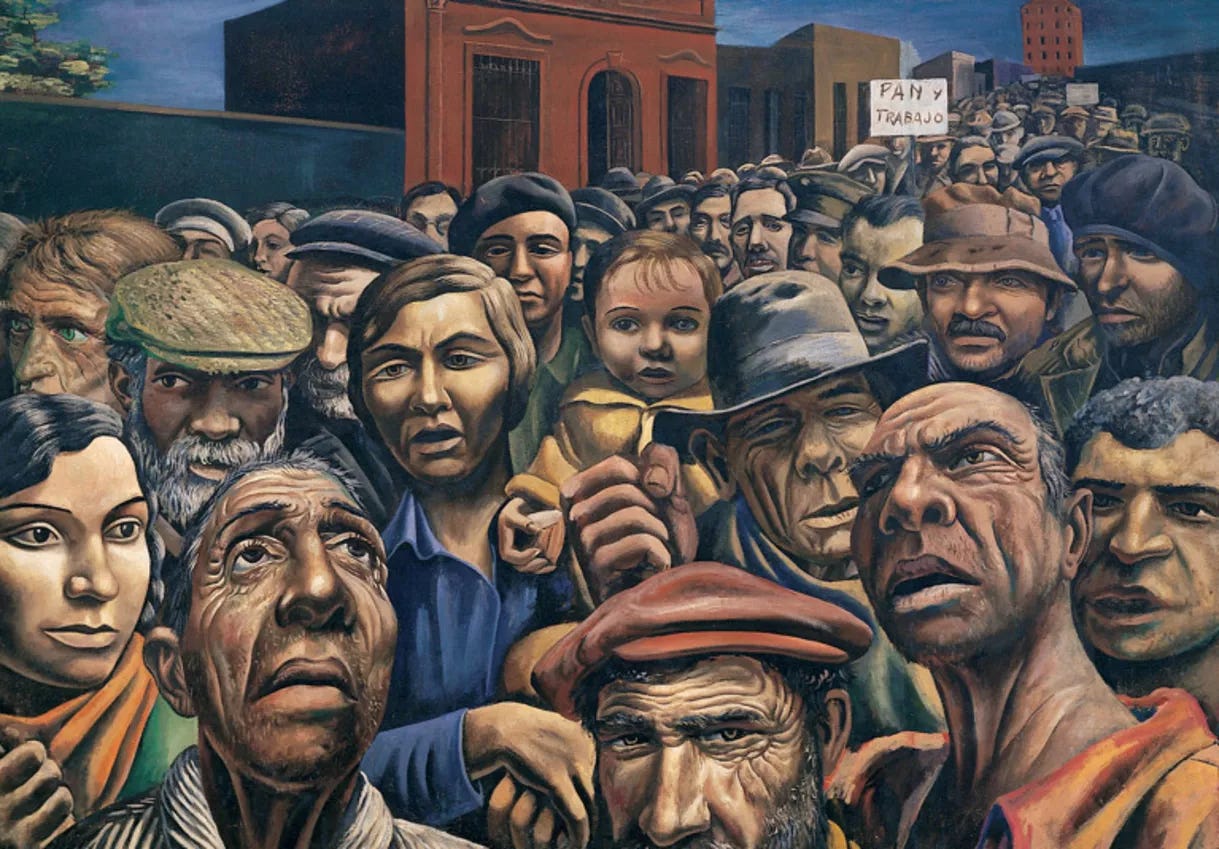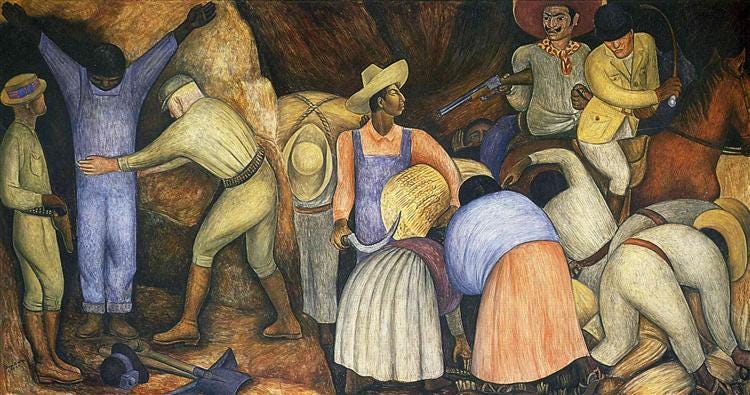Tarsila do Amaral – Abaporu (1928)
Abundance is not excess. It’s infrastructure. The abundance framework doesn’t speak of a certain gluttony with unchecked growth, but the intentional architecture that makes space for human and planetary flourishing (if you’ve been here for a while, you’re likely sick of me saying this). When I speak of abundance, I don’t mean some far-off utopia. I propose conditions. A framework built not to escape constraint entirely, but to reshape the kinds of constraint we live under: from involuntary scarcity to chosen stewardship.
It rests on four intertwined pillars:
Food – The foundation of health, dignity, and growth. But more than sustenance, food is culture, ecology, and ritual. Our food systems must be regenerative and resilient—but also governed by justice, not just productivity.
Labor – Abundance cannot mean obsolescence. It must mean augmentation. AI should amplify human creativity and care, not accelerate inequality or extraction. In a world of accelerating tools, our sense of purpose and agency must rise in proportion.
Longevity – To live longer is not the point. To live wisely is. This pillar asks us to braid biotech with biosphere, and to build care systems that carry intergenerational meaning. This is human flourishing: quality of life, play, care.
Energy – This is the keystone. With cheap, abundant clean energy, everything else becomes possible. But energy abundance cannot come at the expense of ecological collapse. It must be abundance with foresight, not fossilized nostalgia. This is our generation’s Manhattan Project.
These four pillars stand as feedback loops. Abundant energy enables circular food systems. Robust health begets longer planning horizons. We know that once a country crosses ~$5,000 per capita GDP, strategic governance tends to emerge. People invest in education, public health, urban planning. Long-lived, well-fed people become stewards and artists. This is the abundance flywheel: replace the race to more with a spiral toward meaning.
In this piece, I’m focusing on Latin American startups not only because the region is dear to me, but because its innovators are writing one of the world’s most urgent abundance stories. With countries among the most vulnerable to climate extremes—and long burdened by inequality—a new generation of entrepreneurs is building locally rooted, digitally scalable systems. They blend ecology, finance, health, and technology into mosaics of resilience and regeneration. My mother’s side hails from Argentina, and in these ventures I recognize something familiar: the tension between fragility and force, scarcity and ingenuity.
Antonio Berni - Manifestación (1934)
Nativas (Argentina) – Enables regenerative agroforestry via blockchain-verified biodiversity corridors. Engaging hundreds of farmers, restoring degraded land, and turning soil into social-ecological assets.
PhageLab (Chile) – Uses AI-designed bacteriophage cocktails to treat livestock infections—lowering antibiotic use and improving survival rates by ~30%. Raised $11M Series A.
Krilltech (Brazil) – Produces nanostructured crop inputs (Arboline) that boost yields by ~20% and enhance nutritional quality, supported by partnerships like EMBRAPA.
Lemu (Chile) – Nature-intelligence platform combining satellite and AI to manage biodiversity conservation. Over 70 restoration projects supported, planning to conserve 1% of Earth’s land by 2033.
Kilimo (Argentina) – AI-powered irrigation optimization saving 13–50% water and deployed across hundreds of hectares; saved 1.5M m³ of water in 3 years.
Aviva (Mexico) – AI-enabled loans via phygital kiosks, raised $5.5M seed, serves underbanked communities with microloans up to $1,000.
EBANX (Brazil) – Cross-border payments platform processing ~$3.5B+ annually across 15 countries, enabling 29 market access.
Betterfly (Chile) – Gamified wellness & social-impact platform; reached unicorn status (~$1B valuation) and $202 M total funding, serves 1M+ users.
beecrowd (Brazil) – Gamified developer education platform used by universities to boost student engagement & retention.
Nowports (Mexico) – Digital freight forwarding automation; raised $150M (Series C at $1.1 B), cuts shipping delays 40%.
Principia (Brazil) – FinEd platform for schools; serves 500k+ students across 600+ institutions, ~$30M annual revenue.
Alice (Brazil) – Full-stack health insurance startup combining primary care, telemedicine, and wellness support; raised $127M Series C; serves 6,000+ members with integrated hospital and lab networks.
Jelt (Colombia) – Digital wallet & microcredit platform for informal workers; 800+ clients, closed $600K pre-seed.
Talently (Chile) – Certifies Latin American tech talent and connects them with global remote jobs.
Crabi (Colombia) – Digitizing car insurance with easy-to-customize policies and rapid claims, expanding mobility resilience.
This abundance framework stands as a blueprint for systems where energy, food, labor, and capital flow freely, equitably, and regeneratively, all in conversation. These Latin American startups are mesh nodes in a continental web of resilience, where necessity births innovation and purpose becomes infrastructure.
If you’re a founder, investor, or operator building within these loops, let’s connect.
Diego Rivera – The Exploiters (1926)




